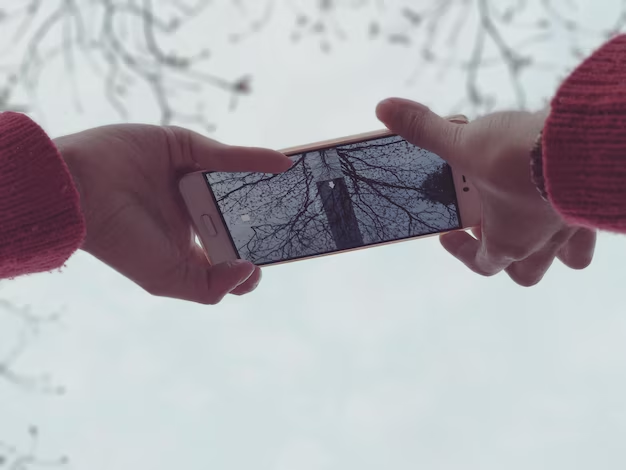Seamless Transfers: Moving Your Photos from Android to iPhone
Switching phones can unsettle even the most tech-savvy among us. Thankfully, moving cherished photos from your Android to your brand-new iPhone doesn't have to be a daunting task. Whether it's memories captured over the years or snapshots from last weekend, we'll guide you through various methods to make this transfer smooth and stress-free. Let's delve into user-friendly techniques that cater to a range of needs and preferences.
📱 First Things First: Preparing for the Transfer
Before you jump into transferring photos, a few preliminary steps will save time and headaches:
- Ensure Both Devices Are Charged: A full battery prevents interruptions during the transfer.
- Back Up Important Data: Make sure your photos and other essential data are backed up on your Android device or via a cloud service.
- Stable Wi-Fi Connection: Some methods require a robust internet connection to function correctly.
Method 1: Using the Move to iOS App
Apple’s own Move to iOS app is one of the simplest ways to transfer data, including photos, from Android to iPhone. Here’s how to make the most of this app:
Installing and Using Move to iOS
- Download the App: Install Move to iOS from the Google Play Store on your Android device.
- Start the Setup Process: Turn on your new iPhone and choose the "Move Data from Android" option during setup.
- Connect Devices: Ensure both devices are on the same Wi-Fi. Open the app on Android and tap "Continue."
- Enter Code: On the iPhone, a code will appear. Enter this code on your Android device.
- Select Data: Choose the data you want to transfer, including photos.
- Wait for Transfer: Depending on the size, this might take some time. Ensure both devices remain connected until completed.
Pros and Cons of Using Move to iOS
Pros:
- Ease of Use: Designed specifically for switching to iPhone.
- All-in-One Solution: Transfers more than just photos—also messages, contacts, etc.
Cons:
- Limited to New Devices: Best for setting up a new iPhone.
- Requires Wi-Fi: Both devices need to be connected to the same Wi-Fi network.
Method 2: Google Photos
Google Photos is a powerful and popular cloud service for photo storage. It offers an alternative when changing devices.
Steps to Transfer Using Google Photos
- Backup on Android: Ensure Google Photos is installed on your Android device. Open the app and enable backup if not already done.
- Log In on iPhone: Download Google Photos from the App Store and log in with the same Google account.
- Access Your Photos: Once logged in, all your photos will be accessible. You can download them to your iPhone as required.
Pros and Cons of Using Google Photos
Pros:
- Cloud Storage: Your photos are accessible anywhere with an internet connection.
- No Transfer Limits: No need to worry about device storage until you decide to download.
Cons:
- Requires Internet: Needs a reliable internet connection for sync.
- Potential Storage Costs: Google may charge for storage beyond the free tier.
Method 3: Manual Transfer via Computer
For those who prefer the old-school method, transferring photos manually via a PC or Mac remains a viable option.
Manual Transfer Steps
- Connect Android to Computer: Use a USB cable to connect your Android device to your computer. Enable “Transfer Files” mode.
- Copy Photos: Navigate to your device’s photo directory and copy the needed photos to your computer.
- Connect iPhone: Now, connect your iPhone to the computer. Use iTunes (for Windows) or Finder (for macOS) to manage files on your iPhone.
- Transfer Photos: Sync the copied photos from your computer to your iPhone.
Pros and Cons of Manual Transfer
Pros:
- No Internet Needed: Doesn’t rely on cloud services or internet connectivity.
- Direct Control: You choose exactly which photos to transfer.
Cons:
- Time-Consuming: More steps and manual handling required.
- Complicated for Casual Users: Requires familiarity with navigating files on a computer.
Handy Tips for a Smooth Transfer
- Organize Before Transfer: Sort and delete unwanted photos on your Android for a cleaner start on your iPhone.
- Check Storage Space: Ensure your iPhone has enough storage. You don’t want to run out midway through the download.
- Verify After Transfer: Double-check the transferred photos on your iPhone before deleting them from the Android device.
Summary: Choose Your Best Method 📷
Here's a quick guide to help decide:
- Move to iOS App: Best for new iPhone users wanting an all-in-one transfer.
- Google Photos: Ideal for users who want cloud access and backup.
- Manual Transfer: Suitable for those who like control and don’t mind getting a bit technical.
Final Insight
Transferring photos from Android to iPhone might initially seem intimidating, given the differences between these platforms. However, choosing the right method based on your situation can make the transition seamless. Whether using Apple’s dedicated tools, cloud storage solutions like Google Photos, or the trusted manual method, each approach has its benefits to fit various preferences. Now you can relax, enjoy your new device, and keep those cherished memories intact.
Remember, while switching devices can feel like opening a new chapter, the stories captured in your photos deserve to journey with you, no matter the phone brand. 📱🌟

Related Topics
- How Can I Transfer a Video From Iphone To Computer
- How Can I Transfer Apps From Iphone To Ipad
- How Can I Transfer Apps From One Iphone To Another
- How Can I Transfer Contacts From Iphone To Iphone
- How Can I Transfer Contacts From One Iphone To Another
- How Can I Transfer Data From Iphone To Android
- How Can I Transfer Data From Iphone To Iphone
- How Can I Transfer Data From Iphone To Samsung
- How Can I Transfer Files From Android To Pc
- How Can I Transfer From Iphone To Samsung